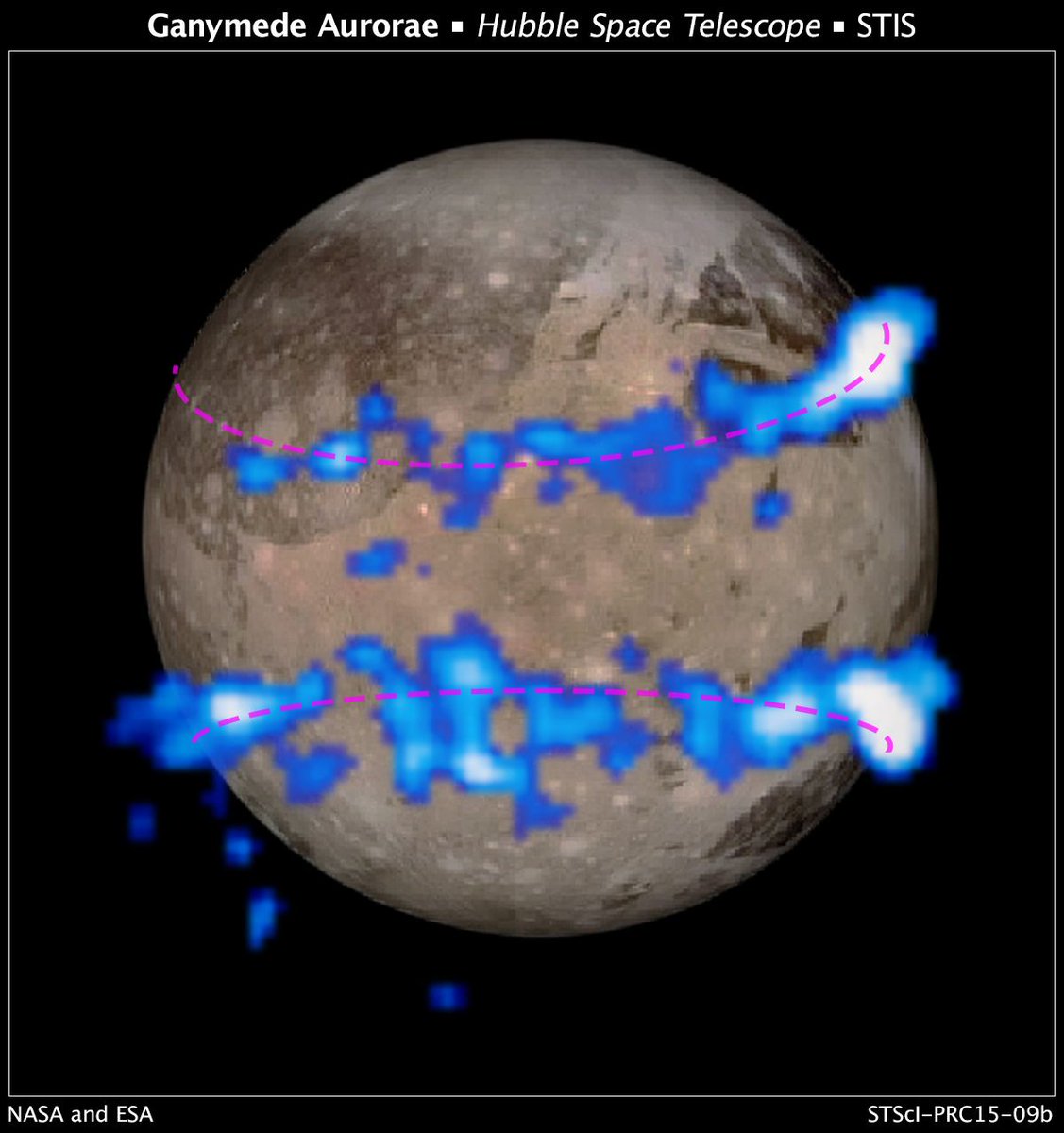Two other Jupiter& #39;s Galilean moons also have their secrets buried deep beneath their crust. Ganymede is larger than Mercury and Pluto, and only slightly smaller than Mars. If it was orbiting Sun and not Jupiter it would be classified as a planet.
Ganymede is the only moon with its own magnetic field. In the video below you can hear sounds in the Ganymede magnetosphere captured by spacecraft Galileo. https://www.youtube.com/watch?v=JCL89nM1hi0">https://www.youtube.com/watch...
Daytime temperatures on the surface average -112C (-171F) to -182C (-297 F), and night temperatures drop to -193C (-315F). Below is a video of how Ganymede looks like, based on images from NASA& #39;s Galileo orbiter. https://www.youtube.com/watch?v=xl4KIDPAFas">https://www.youtube.com/watch...
Ganymede& #39;s auroras, were observed using Hubble Telescope in 2015. Researchers watched the two auroras "rock" back and forth with Hubble. Ganymede& #39;s aurora didn& #39;t rock as much as expected, so they have concluded that a subsurface ocean was likely responsible for that aberration.
There seem to be a salty ocean lurking under the surface of Ganymede. Its interior composition is: iron core, rocky mantle, icy mantle, 100 km deep liquid ocean and icy crust. (NASA, ESA, and A. Feild (STScI))

 Read on Twitter
Read on Twitter





